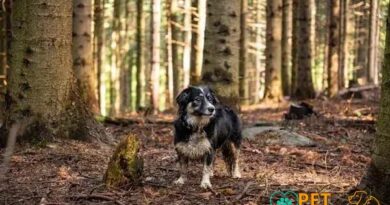What is canine evolution
What is Canine Evolution?
Canine evolution refers to the process through which modern dogs have developed from their wild ancestors over thousands of years. This fascinating journey began with the domestication of wolves, which are considered the closest relatives of domestic dogs. Through selective breeding and adaptation to human environments, various breeds emerged, each with unique traits and characteristics. Understanding canine evolution provides insight into the behaviors, physical traits, and social structures of dogs today.
The Ancestral Roots of Dogs
The story of canine evolution starts with the gray wolf, which roamed the Earth approximately 15,000 to 40,000 years ago. Early humans began to form a symbiotic relationship with these wolves, leading to the domestication process. This relationship was mutually beneficial; wolves helped humans with hunting, while humans provided food and shelter. Over generations, the wolves that were less aggressive and more sociable were favored, leading to the gradual evolution of the domestic dog.
Domestication and Its Impact
Domestication played a crucial role in shaping the evolution of dogs. As humans settled into agricultural societies, they began to selectively breed wolves for specific traits, such as size, temperament, and appearance. This selective breeding led to the emergence of distinct dog breeds, each adapted to various roles, such as herding, guarding, and companionship. The impact of domestication is evident in the vast diversity of dog breeds we see today, ranging from tiny Chihuahuas to large Great Danes.
Genetic Changes Over Time
As dogs evolved, significant genetic changes occurred, differentiating them from their wild ancestors. Research has shown that domesticated dogs possess unique genetic markers that influence behavior, physical traits, and health. For instance, certain genes associated with aggression and fearfulness have been altered in domestic dogs, making them more suitable companions for humans. These genetic changes highlight the profound impact of domestication on canine evolution.
Behavioral Evolution in Dogs
Behavioral evolution is another critical aspect of canine evolution. As dogs adapted to living alongside humans, their social behaviors evolved to enhance cooperation and communication. For example, dogs developed the ability to understand human gestures and commands, which is a trait not commonly found in their wild counterparts. This behavioral adaptability has made dogs exceptional companions and working animals, capable of performing various tasks alongside humans.
The Role of Environment in Canine Evolution
The environment has played a significant role in shaping canine evolution. Different geographical regions and climates have led to the development of breeds that are well-suited to specific conditions. For instance, breeds like the Siberian Husky evolved in cold climates, while the Basenji is adapted to hot, arid environments. This environmental influence on evolution underscores the importance of adaptability in the survival and success of dog breeds.
Modern Breeding Practices
In contemporary times, breeding practices have evolved significantly, often focusing on aesthetics and specific traits rather than working abilities. This shift has led to the creation of numerous designer breeds and hybrids, which can sometimes result in health issues due to a limited gene pool. Understanding the implications of modern breeding practices is essential for promoting the health and well-being of dogs, as it directly impacts their evolution and survival.
Conservation of Dog Breeds
As we explore canine evolution, it is crucial to consider the conservation of dog breeds. Many traditional breeds are at risk of extinction due to changing lifestyles and preferences. Efforts to preserve these breeds are vital for maintaining genetic diversity and the historical significance of dogs. Conservation initiatives often involve responsible breeding practices and education about the importance of preserving unique breeds for future generations.
The Future of Canine Evolution
The future of canine evolution is an intriguing topic, as advancements in genetics and breeding techniques continue to evolve. With the potential for genetic engineering and cloning, the landscape of dog breeding may change dramatically. However, ethical considerations must guide these advancements to ensure the health and welfare of dogs remain a priority. The ongoing study of canine evolution will undoubtedly reveal more about the relationship between dogs and humans in the years to come.



